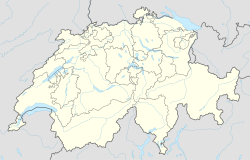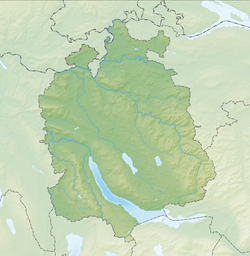Top Qs
Timeline
Chat
Perspective
Aeugst am Albis
Municipality in Zurich, Switzerland From Wikipedia, the free encyclopedia
Remove ads
Aeugst am Albis is a municipality in the district of Affoltern in the canton of Zürich in Switzerland.
Remove ads
History
Aeugst am Albis is first mentioned in 876/877 as Ousta. In 1277 it was mentioned as Oeugsten.[2]
Geography

Aeugst am Albis has an area of 7.9 km2 (3.1 sq mi). Of this area, 52.7% is used for agricultural purposes, while 31.3% is forested. Of the rest of the land, 11.6% is settled (buildings or roads) and the remainder (4.5%) is non-productive (rivers, glaciers or mountains).[3]
The municipality includes the village of Aeugst, which is located on a southern terrace of the Aeugsterberg. It also includes Wengi and in the upper Reppischtal, the village of Aeugstertal.
Remove ads
Demographics
Summarize
Perspective
Aeugst am Albis has a population (as of 31 December 2020) of 2,014.[4] As of 2007[update], 9.7% of the population was made up of foreign nationals. Over the last 10 years the population has grown at a rate of 17.8%. Most of the population (as of 2000[update]) speaks German (95.2%), with English being second most common ( 1.6%) and French being third ( 0.9%).
After the 2010 elections, the SVP is no longer represented in the municipality council.[5]
The age distribution of the population (as of 2000[update]) is children and teenagers (0–19 years old) make up 24.2% of the population, while adults (20–64 years old) make up 65.5% and seniors (over 64 years old) make up 10.3%. In Aeugst am Albis about 83.5% of the population (between age 25-64) have completed either non-mandatory upper secondary education or additional higher education (either university or a Fachhochschule).
Aeugst am Albis has an unemployment rate of 1.55%. As of 2005[update], there were 67 people employed in the primary economic sector and about 25 businesses involved in this sector. 17 people are employed in the secondary sector and there are 9 businesses in this sector. 253 people are employed in the tertiary sector, with 55 businesses in this sector.[3] The historical population is given in the following table:[2]
References
External links
Wikiwand - on
Seamless Wikipedia browsing. On steroids.
Remove ads






